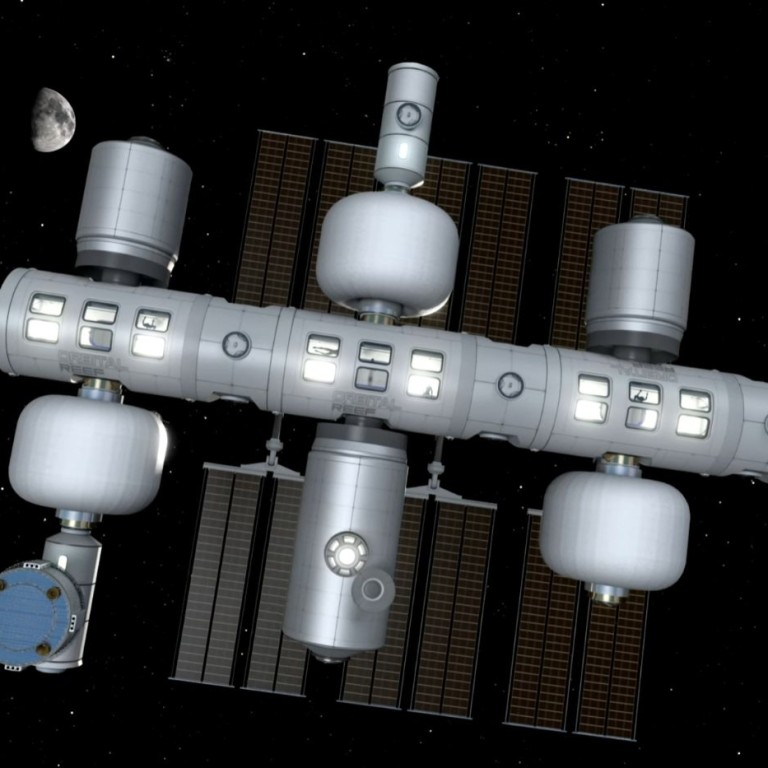
Nasa awards US$415 million to fund three commercial space stations
- Nasa commissions three companies to develop designs for new commercial space stations
- Jeff Bezos’ Blue Origin is working with partners on space station called Orbital Reef
Nasa has awarded three companies hundreds of millions of dollars to develop commercial space stations it hopes will eventually replace the International Space Station, which is due to retire around the end of the decade.
Jeff Bezos’ Blue Origin, aerospace company Nanoracks and defence contractor Northrop Grumman won US$130 million, US$160 million and US$125.6 million contracts respectively to develop their orbital outposts.
A fourth company, Axiom Space, was previously awarded a US$140 million contract.
The US space agency is increasingly turning to private industry to develop hardware it once made itself, in order to reduce costs and to focus on its ambitious goals, which include building habitats on the moon and preparing for a crewed mission to Mars.
‘A revolution’: China may be first with global laser satellite network
“We are partnering with US companies to develop the space destinations where people can visit, live, and work, enabling Nasa to continue forging a path in space for the benefit of humanity while fostering commercial activity in space,” said Nasa chief Bill Nelson in a statement.
“These awards will help ensure the United States has a continuous human presence” in low-Earth Orbit, said Phil McAlister, Nasa’s director of commercial space flight. “A gap would be bad.”
Blue Origin is partnering with Sierra Space to develop Orbital Reef, which will house up to 10 people in the second half of the decade. It has been described as “a mixed-use business park in space” that will support microgravity research and manufacturing
Nanoracks’ space station, which it is developing with Voyager Space and Lockheed Martin, is called “Starlab”.
Nasa launches mission to deliberately smash spacecraft into asteroid
Nanoracks is targeting launch for 2027 and envisages a biology lab, plant habitation lab, physical science and materials research lab, and an open workbench area.
“This opportunity opens far-reaching possibilities for critical research and commercial industrial activity in LEO,” Nanoracks Chief Executive Amela Wilson said referring to low-Earth orbit.

Northrop Grumman, which already developed a spaceship called Cygnus that provides cargo deliveries to the ISS, plans to build its station module by module, including areas for science, tourism and industrial experimentation.
“Our station will enable … sustainable commercial-based missions where Nasa does not bear all the costs, but serves as one of many customers,” said Northrop Grumman vice-president for civil and commercial space Steve Krein.
None of the companies has given an estimate for the total cost of developing the space stations.
Debris from Russian missile test forces ISS crew to take evasive action
McAlister said Nasa’s financial contribution to the projects would not exceed 40 per cent.
“The sum invested today by Nasa to launch this programme is small compared to the money that will be required,” said Brent Sherwood, Blue Origin’s senior vice-president of advanced development programmes.
It has been 21 years since the first long-term residents arrived on the ISS, a symbol of international cooperation, especially between the United States and Russia.
It is currently rated as safe until 2028, and new administrator Nelson has said he hopes it will last until 2030, by which time Nasa wants the commercial sector to step up and replace it.
Agence France-Presse, Reuters and dpa
